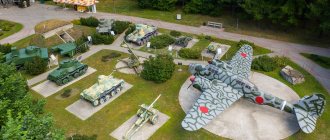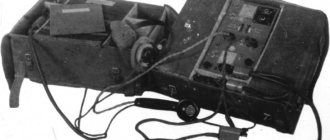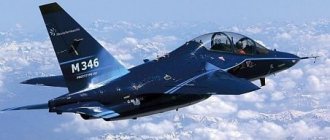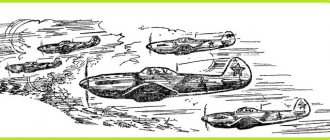“Most of the Russian military equipment cannot be placed in the Il-76”
“Our military transport aviation played a big role [during the peacekeeping operation in Kazakhstan], these are completely obvious things. We quickly managed to concentrate our necessary forces, means and resources. Everything literally worked like clockwork: quickly, smoothly and efficiently,” said Russian President Vladimir Putin.
“The Russian army suffers from Plyushkin syndrome.” Why is Favorit needed in Siberia?
The modernized S-300PM-2 “Favorit” anti-aircraft missile systems (AAMS) will enter service with the Central...
13 January 23:52
According to data from open sources, currently the VKS Aerospace Forces of the Russian Federation includes the following types of aircraft: light An-26 (more than 110 units), medium An-12 (56 units), heavy Il-76 (about 120 units), heavy An-124 "Ruslan" with intercontinental flight range (5 units), heavy turboprop An-22 (4 units).
In addition, Tu-154 of various modifications (18 units), Il-62M (6 units), Tu-134 (54 units), Il-18D (8 units), An-140 ( 3 units), An-148 (15 units).
The main problem is that most of these aircraft were manufactured in the Soviet Union and they need replacement.
Lack of heavy aircraft
The first and, probably, main question is whether Russia, in principle, needs to create (or resume production) of a large aircraft such as the An-124 Ruslan. Now there are critically few of them.
“War is expensive. It’s impossible to hide preparations for it.”
About 3 thousand military personnel of the Western Military District (WMD) began training at training grounds...
January 13 17:00
Our country needs an aircraft with an intercontinental flight range. First of all, because the main aircraft of the domestic military aviation aviation, the Il-76, is extremely unsuccessful precisely from the point of view of the main task of transport aviation - the transfer of weapons and military equipment.
The main problem of this machine is not even that the Il-76 does not have an intercontinental flight range. The main thing is that its cargo compartment does not allow transporting equipment - with the exception of airborne weapons. Everything else is not included without complete disassembly. For example, helicopters need to be dismantled, airplanes too. Anti-aircraft missile systems also do not fit into the Il-76 due to their dimensions.
In other words: the IL-76, in terms of its carrying capacity, can carry almost everything, that is, theoretically it can lift 80% of any domestic equipment, but most of this equipment cannot be placed on the plane - due to the parameters of the cargo compartment.
This is understandable and explainable: the aircraft was created specifically for the needs of the Airborne Forces. Now, in fact, this is the main aircraft of the BTA.
Engine life for a light aircraft
The Russian Aerospace Forces operate Soviet light military transport aircraft An-26 and its modifications, but they have almost exhausted their service life. The Il-112V is being created to replace them.
Turbines of discord. How Ukraine forced Russia to sell frigates to India
Project 11356 frigate “Tamala”, being built for the Indian Navy at the Baltic Shipyard...
13 January 12:37
The new vehicle should be capable of transporting a wide range of cargo, including various types of weapons, military equipment, as well as personnel, and be capable of automatic landing at airfields equipped according to the standards of the second category of the International Civil Aviation Organization (ICAO), and manual approach. for poorly equipped and not equipped with radio equipment airfields.
The design of this aircraft began in the first half of the 1990s. In April 2004, the Il-112V aircraft project won the Ministry of Defense competition for the development of a light military transport aircraft, beating the MiG-110, M-60LVTS and Tu-136T projects. At that time, the manufacturer expected that the first Il-112V would take off in 2006, and the pilot batch would be produced in 2007. However, the project was not implemented on time.
In August 2010, the Ministry of Defense completely suspended funding for the project, and later completely abandoned the idea of a military transport version of the Il-112 and announced its intention to purchase seven An-140 cargo aircraft in Ukraine.
Cooperation with the Ukrainian defense industry became irrelevant after the events of 2014. Already at the end of 2014, representatives of the Ilyushin aviation complex announced the conclusion of a new contract with the Ministry of Defense for the development of the Il-112V.
A new version of the engine is being made to meet the technical specifications for the aircraft, and so far it is the engines that are the main problem with the creation of the Il-112V aircraft. It is not possible to reach the required resource of the engine, which still remains of limited resource. A light aircraft must fly every day - and offering such a machine to the general customer with a low-life and unreliable engine means again dooming the entire project to failure.
A heavy blow to this project was dealt by the disaster with the first flight model of the Il-112V, which occurred on August 17, 2022 near the Kubinka airbase.
The main cause of the incident, which was named by experts
, – just the fire of the right engine, which quickly turned into a strong fire. Within seconds, the plane banked to the right wing, went into a dive and crashed. All three crew members on board were killed. The investigation into the accident is currently ongoing.
The author's opinion may not coincide with the position of the editors.
Author biography:
Mikhail Mikhailovich Khodarenok is a military columnist for Gazeta.Ru, a retired colonel. Graduated from the Minsk Higher Engineering Anti-Aircraft Missile School (1976), the Military Command Academy of Air Defense (1986). Commander of the S-75 anti-aircraft missile division (1980–1983). Deputy commander of the anti-aircraft missile regiment (1986–1988). Senior officer of the Main Staff of the Air Defense Forces (1988–1992). Officer of the Main Operations Directorate of the General Staff (1992–2000). Graduate of the Military Academy of the General Staff of the Russian Armed Forces (1998). Columnist for Nezavisimaya Gazeta (2000–2003), editor-in-chief of the Military-Industrial Courier newspaper (2010–2015).
Description
The Il-76 transport aircraft became the first aircraft for the Soviet Union, the main power plant of which was turbojet engines. Otherwise, the vehicle was assembled according to the usual principle for heavy aviation: swept wings and a T-shaped tail with a single fin. A distinctive feature is the complete sealing of both service and cargo compartments. The plane has three cargo hatches, one in the rear and two in the front. This arrangement allows troops to be released into 4 streams at once (the rear hatch consists of several doors), but in practice this was not used. In most cases, troops were thrown out only from the front hatches, while heavy equipment was released from the rear hatches using parachutes.
At the same time, like any aircraft of this type, the Il-76TD has special equipment located in two tiers, four electric hoists and, of course, several cargo winches. The design of the rear hatch is standard, with three doors, two of which open to the sides, and the central one goes down, forming a kind of ladder for driving in or rolling in. In addition, the cargo hold has several roller tracks to facilitate the movement of large containers.
The aircraft has 4 powerful engines located on pylons under the wings. When viewed from the front or from above, it is clearly noticeable that the wings are located above the fuselage, in a kind of protrusion, which, together with the front one (about which below) is a characteristic feature of the prototype, present in its modifications, including the civilian version of the Il-76TD. A powerful landing gear system, arranged in a five-point pattern (4 under the wings, 1 under the nose), allows landing not only on concrete strips, but also on dirt roads.
Refueling
The fuel system deserves special mention. In an ordinary civilian airliner, regardless of the number of engines, there are two, sometimes three tanks. The standard instruction manual for the technical operation of the IL-76TD mentions 12 tanks, divided into 4 sections (according to the number of motors). Each of them is further divided into main, additional and spare tanks. Thus, the pilot has a fairly flexible ability to control fuel consumption and can respond in a timely manner to any unforeseen situations. The total capacity of all tanks exceeds 100 thousand liters of fuel.
Flight ban
The beginning of the new century was marked by a black streak in the development of the 76 model. In 2000, ICAO (the international organization that oversees all civil aviation) tightened the requirements for modern aircraft. Airports in Europe, North America, Japan and even Australia were closed for cars that did not meet the new standards. The main complaints against IL-76 were noise and air pollution.
The result of equipment modernization was a version that received, in addition to the main one, the index 90VD. Aircraft of the new class fly around the world without restrictions, delivering cargo to various corners of the planet.
Characteristics
We examined individual parameters of the Il-76TD aircraft. We will summarize the technical characteristics in a general list.
Considering that many aircraft have already been flying for more than a quarter of a century, let's start with the fact that the service life declared by the developers is 30 years. True, it is worth noting that new modifications are still rolling off the assembly line, only no longer in Tashkent, which today is considered abroad, but in Ulyanovsk.
- Wing span - 50 m.
- Wing area - 300 sq. m.
- The length of the aircraft is 46.5 m, the cargo compartment is 24.5.
- Height (keel) - 14.7 m; cargo compartment - 3.4 m.
- Width - 3.45 (cargo compartment).
- Volume - 321 cubic meters. m.
Note that the fuselage in cross-section represents a regular circle; it must also be said that the aircraft has the ability to install a second ramp, while the length of the cargo compartment is slightly reduced.
Flight data:
- The minimum take-off weight is 88 tons, the maximum is 210.
- Cruising speed is 800 km/h, maximum speed is 850.
- Flight range - 4000 km, maximum - 6000.
- Practical ceiling - 12,000 m.
- Landing speed - 210 km/h.
- The length of the runway for takeoff (mini) is 850 m, for landing – 450 m.
- Engines - 4 (TVD D-30KP-2).
- Traction force - 12,000 kgf on each.
- Fuel in all tanks - 109,000.5 liters.
Load capacity
When developing any modern aircraft, no matter what type, designers must take into account many external and internal parameters, otherwise the aircraft simply will not be able to take off. When development is completed and mass production has begun, purchasing airlines will pay attention to other properties, but one of them will be common to both designers and carriers.
This is the carrying capacity. During numerous upgrades, the IL-76TD was able to carry one and a half times more than its prototype. The first cars had a stated figure of 28 tons. The latest developments have 42 tons, and new modifications have up to 60 tons.
Crew
Like most Soviet transport aircraft, the aircraft received all-round glazing in the nose. The upper part was where the main control was located, and the lower part was the chart room. The IL-76TD crew consisted of 5 people. This is the first pilot (aka PIC), second pilot, flight engineer and radio operator. The team also included a navigator. The first aircraft and purely military versions have two more crew members - these are riflemen. It is to the chart room that the aircraft owes its somewhat unusual appearance to the nose.









